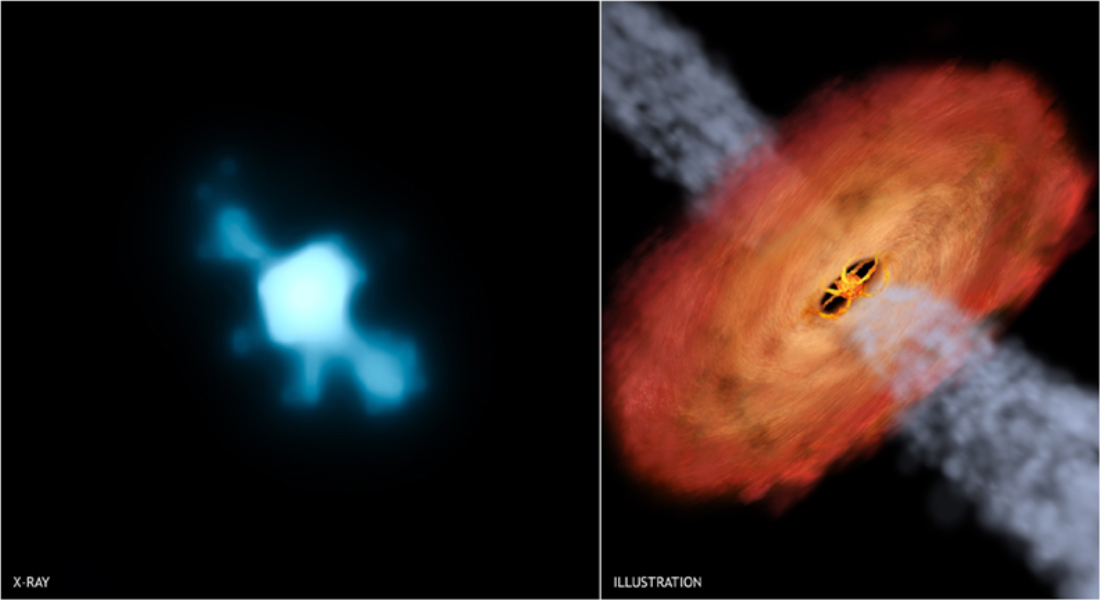
 Credit: X-ray: NASA/CXC/ETH Zuerich/M.Guedel et al.; Illustration: NASA/CXC/M.Weiss
Credit: X-ray: NASA/CXC/ETH Zuerich/M.Guedel et al.; Illustration: NASA/CXC/M.Weiss
Onto and Out
Young stars sure do some strange things. The image above left is a Chandra X-ray image of the very young star DG Tau. DG Tau is a star with a mass of about half that of the Sun, and is only about 300,000 years old (only 0.006% the age of the Sun). By studying such young stars, astronomers begin to understand how stars and planets form. We know that stars are built by accreting material from the interstellar clouds in which they form. The accretion process is a precarious balancing act between gravitational and centrifugal forces; the result is the formation of an accretion disk near the equator of the star. This accretion process can be, and often is, accompanied by the ejection of material normal to the disk, in a high-powered jet. The Chandra image on the left shows X-ray emission from the double-sided jet from DG Tau. The jet in DG Tau extends to about 10 times the size of our solar system, and the Chandra data show that the bottom jet is probably pointing towards us, while the top jet is pointing away from us. X-rays from the young star itself can be seen between the two jets. The image on the right is an artist conception of the DG Tau system showing the accretion disk plus high-energy jets with a clarity of which scientists can only dream. What was our Sun doing at a similar age? And did such X-rays affect the formation of our planetary system?
Published: March 30, 2009
<
HEA Dictionary ● Archive
● Search HEAPOW
● Other Languages
● HEAPOW on Facebook
● Download all Images
● Education ● HEAD
>
Each week the HEASARC
brings you new, exciting and beautiful images from X-ray and Gamma ray
astronomy. Check back each week and be sure to check out the HEAPOW archive!
Last modified Tuesday, 27-Feb-2024 10:10:03 EST


